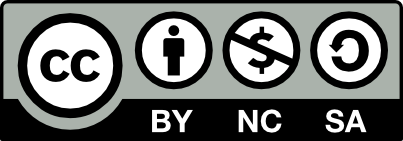Empreu aquest identificador per citar o enllaçar aquest ítem:
http://hdl.handle.net/10609/148047
| Títol: | Propuesta de implementación de un sistema de lanzaderas de autobuses eléctricos con tecnología LoRaWAN en Estocolmo, Suecia |
| Autoria: | González Fernández, Ander |
| Tutor: | Saura Mas, Xavier |
| Altres: | Monzo, Carlos |
| Resum: | El presente trabajo tiene como objetivo estudiar la implementación de un sistema de gestión de lanzaderas de autobuses eléctricos apoyado por una red LoRaWAN que será utilizado para transportar a los ciudadanos y ciudadanas que lo deseen desde varios puntos de las afueras de la ciudad de Estocolmo a la zona de bajas emisiones. Este trabajo estudia si un sistema así puede reducir el impacto negativo que la zona de bajas emisiones de la Región de Estocolmo pueda tener, además de comprobar su viabilidad económica. Para ello, se realiza un análisis de los protocolos de comunicación para IoT en general y LoRaWAN en particular. Se estudian las características de los autobuses eléctricos (consumo energético y estrategias e interfaces de carga). Asimismo, se estudia el tráfico en Estocolmo y el impacto de la zona de bajas emisiones. Posteriormente, se propone un caso de uso basado en la Región de Estocolmo y se implementa el sistema gracias a 9 zonas de lanzaderas donde las personas podrán aparcar su vehículo y tomar un autobús 100% eléctrico al centro de la ciudad. Una red LoRaWAN obtendrá los datos de los autobuses y de una serie de nodos de detección de tráfico que podrán ser utilizados por un modelo de gestión automatizada del tráfico. Se comprueba que un sistema así es costoso pero rentable, permitiendo ahorros directos e indirectos a la Región de Estocolmo (aunque a costa de impactos negativos especialmente medioambiental). Se comprueba también la facilidad de implementación de las redes LoRaWAN. The main goal of this thesis is to check if a shuttle system using battery-electric buses and a LoRaWAN network can reduce the negative social impact of the implementation of the low-emission zone in Stockholm, Sweden. To get the needed conclusions, first, in-depth research is done on IoT technologies and LoRaWAN with special focus on their use in Intelligent Traffic Systems. After, the energy consumption and charge strategies and interfaces of the battery-electric buses are studied. Finally, the particularities of the traffic in Stockholm are identified, as well as the particularities of the low-emission zone implemented in the capital of Sweden. After, a case study is proposed based on the Stockholm Region. A specific shuttle network is implemented for the proposed case study by using 9 “shuttling zones” (formed by parking for cars and buses and a bus station provided with a charging station for the buses) in which citizens can park their combustion-powered car and board one of the battery-electric buses to reach the city centre. A LoRaWAN network supports the shuttle system and allows future implementations of automatic traffic management systems. The shuttle system is proved to be profitable even if the investment is big. Besides, a positive impact would be noticeable in the traffic congestion and the health of the exposed citizens living in the city centre. Nevertheless, negative environmental impact would come along with the shuttle system mainly due to the construction of big “shuttling zones”. |
| Paraules clau: | LoraWAN internet of things zona de bajas emisiones lanzaderas de autobuses eléctricos ITS (Intelligent Transportation System) |
| Tipus de document: | info:eu-repo/semantics/masterThesis |
| Data de publicació: | gen-2023 |
| Llicència de publicació: | http://creativecommons.org/licenses/by-nc-sa/3.0/es/  |
| Apareix a les col·leccions: | Bachelor thesis, research projects, etc. |
Arxius per aquest ítem:
| Arxiu | Descripció | Mida | Format | |
|---|---|---|---|---|
| agonzalez9TFM0123memoria.pdf | Memoria del TFM | 4,13 MB | Adobe PDF |  Veure/Obrir |
Comparteix:
 Google Scholar
Google Scholar
 Microsoft Academic
Microsoft Academic
Aquest ítem està subjecte a una llicència de Creative CommonsLlicència Creative Commons


